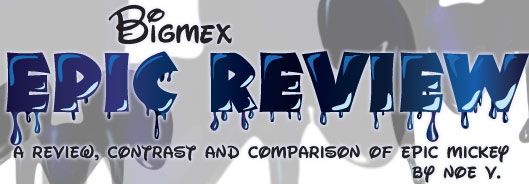
As the 8-bit mechanics gave way to 16-bit technology, so too would the 32 and 64-bit barrier forever change the landscape of gaming. The polygon was quickly surpassing sprite animation as a cheaper, faster alternative for designing and presenting games to audiences. The stunning animation of Earthworm Jim and Maui Mallard would soon find itself being glossed over for three-dimensional objects. Shiny, along with many other companies, were having problems bringing established mascots to 3D. The wit, animation and style of Earthworm Jim did not work readily in 3D. The character ended up looking clumsy and cumbersome in the N64 title.
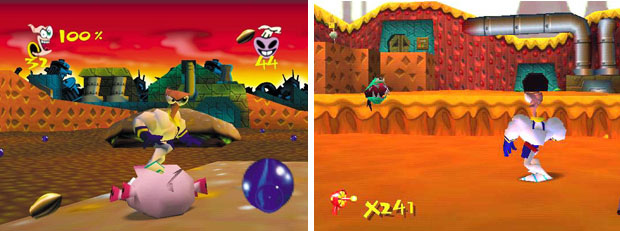
Rather than work with Disney, or license characters from them, publishers were able to create new mascots that would lend themselves to 3D. Characters like Spyro, Crash Bandicoot and Medievil would be fighting for the public's attention. Thanks to the lack of preconception from audiences, a new generation of mascots were quickly adopted because there was nothing to compare them to. It would be an uphill battle trying to make 2D characters relevant to the new generation of games and gamers. As with the previous generations Disney would experiment with the formula and see what worked best.
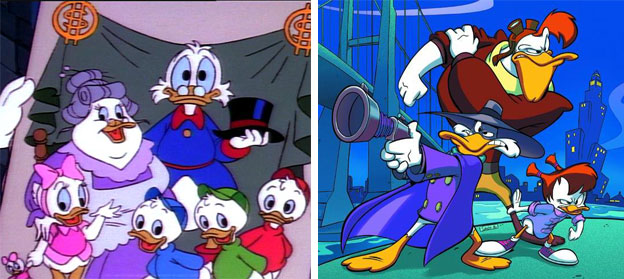
Unfortunately the Disney Afternoon had been pulled from the airwaves by the mid and late 90's. Latter shows with fan followings, Goof Troop, Darkwing Duck received average-at-best games. Most of the animated movie franchises had been put on earlier platforms and there wasn't quite a demand for a game based on Pocahontas or the Hunchback of Notre Dame. It would be a tough road trying to reconnect with gamers that were only getting older and expecting more complex and diverse experiences. Gamers, and the public in general, held the Disney characters to very high standards. Even if most of the games were forgettable gamers did not want to see the icons doing things that were outside the norm or would break with tradition. The one that had been the most traditionally "hands off" was Mickey Mouse. However Donald, or variations of the Duck character seemed to lend himself very well to original game design. It worked in Maui Mallard and it would work again on newer systems. One of Disney's better 3D titles, Goin' Quackers placed Donald in both a traditional 2D platforming and in a behind-the-back Crash Bandicoot 3D mechanic. Despite being in 3D the character was very on model and was animated with a familiar stretch and squash style.
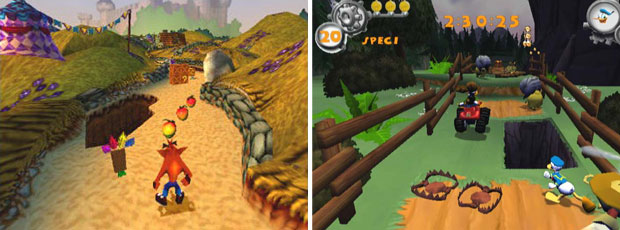
Another variation of the Duck character in 3D would come up with PK Duck. Originally an alter-ego for Donald created by Italian comic book writers, Paperinik aka the Duck Avenger, was a hero that used an arsenal of gadgets to fight crime. On the platforms this translated to a Disney character that could move outside of the normal conventions and fight with weapons and technology. Donald in the game was voiced by the familiar Tony Anselmo while PK was voiced by Rob Paulsen. PK Duck could combat evil, solve puzzles and shoot projectiles without resorting to graphic violence. Just as Maui Mallard had done in the previous generation, PK Duck was a way giving gamers the gameplay elements that they wanted and high levels of cartoon detail without stepping on the Disney legacy.
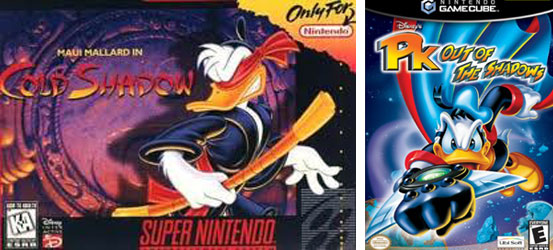
Unfortunately not all of the Disney games were as fun on the consoles for most of the 90's and early 2000's. Many times a title felt as if it were licensed with no thought to how the content would work or whether there even was a game mechanic behind the title at all. These felt unpolished, unoriginal, and failed to sell with anyone, damaging the reputation that Disney was trying to build among gamers and aging animation fans. The worst offender, the biggest discredit to the Disney name was Disney's Magical Mirror, Starring Mickey Mouse. The game was slow and torturous, a puzzle solving quest with few hints and no logical structure. The clueless mouse and strange level design made even the worst game seem good by comparison. By early 2000 the Disney games were synonymous with banality. Easily looked down at by the gaming masses. There were at least two publishers that were trying actively to save the name and reputation among gamers, interestingly enough they were both Japanese and highly respectful of the animated legacy.
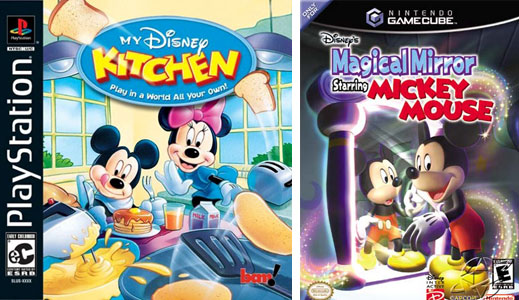
Square-Enix had partnered up with Disney to create a role-playing series featuring not only the mascot characters, but also many generations worth of animated features. The role-playing mechanic meant that Square-Enix could focus on crafting a story that would compliment the Square and Disney universes rather than try to compete with the emerging 3D platformers and adventure titles. The game could also lend itself to character designs, or rather redesigns of the iconic Donald, Goofy and Mickey. The actual voice actors from Disney Studios lent their voices to the game and helped breathe life into the redesigns. The end result was nothing short of inspired.
Kingdom Hearts was a commercial and critical success. Bridging the gap between animation enthusiasts and both casual and hardcore gamers. The "Big 3" were more Japanese game-influenced rather than American cartoon inspired, this look worked very well among gamers but was not so bizarre as to shun traditionalists. The other characters and settings in the game kept their origins more or less intact. Square-Enix did not try to redesign the other characters in the game, specifically those that were solely making a cameo appearance. Part to appease fans of the animated features but possibly as to not break the delicate licensing arrangements that they had worked out with Disney.
![]()
At the same time Konami and Disney Interactive had partnered to bring together a Disney Sports franchise featuring most of the classic icons; Mickey, Minnie, Goofy, Max, Donald, Daisy, Pete, Mortimer and the Big Bad Wolf. Other icons would act as referees and officials in the series, including Scrooge McDuck, Jose Carioca, Huey, Dewey and Louie. The games would be released exclusively for the GameCube in waves of global popularity, attendance and participation. The first and best produced among them being Disney Sports Soccer. Within a year it was followed by American Football, Basketball and Skateboarding. Other action sports with the mascots, motocross and snowboarding, would be featured on the GameBoy Advanced. These games all featured the actual voice actors for the characters, as well as additional personalities added for narration and the supporting cast.
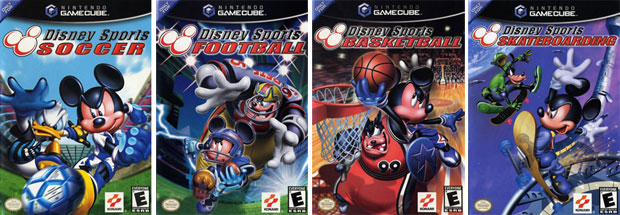
Disney Interactive worked with Konami creating accurate three-dimensional models of the characters. The models were so good that I would argue that they had a greater likeness to the original characters than those featured in Kingdom Hearts. These icons were then complimented with original animal teammates that held a similar Western-cartoon design aesthetic rather than a Japanese anime one. While the characters were not animated with the squash and stretch feel, they were presented with a sense of character and personality. Goofy for example would move with an exaggerated flailing and Donald would run with a scowl and bark at opponents and teammates alike. Both Konami and Disney Interactive then set about building lavish stadiums around the mascots that complimented the Disney universe without necessarily taking cues from any animated film. I spoke at great length about my Disney Sports gaming experience in earlier blogs this year. I could summarize the DSN experience by saying the soccer title was by far the best game in the series. Impeccable models, expressive voices and detailed levels could not make up for the bad control and incomplete features in the other games.

Konami had shown audiences that Mickey Mouse and his fellow icons could still be relevant to gamers, not solely in a platforming game but in sports and action sports as well. Despite the shortcomings with the DSN series gamers had a sense to the personalities of the cartoon archetypes and saw how well they work in a more solid format. When the games were running the way they were supposed to the icons could easily stand in for the most popular gaming or sports personalities. Who needs John Madden or Tony Hawk when Mickey Mouse and Donald Duck are more universally known? Only Mario or Sonic the Hedgehog could claim as much notoriety as the cartoon heroes.

Square-Enix managed to convey the same sentiment even better and set a standard that would be difficult to top. Most Western developers would be unable to best the work that the Japanese were doing for Disney and had been doing for almost 20 years. Even Warren Spector made mention of how Square-Enix's Tetsuya Nomura kept the Disney name relevant to gamers and how Kingdom Hearts was the reason why Epic Mickey was given a chance. The Disney characters were brought into the modern gaming world, finally presented in 3D without sacrificing the personalities of the animated greats. With the groundwork laid out and a legacy of more misses than hits it would be up to Junction Point and Disney Interactive to make the single biggest icon relevant to gamers once again. Would Epic Mickey be the new Castle of Illusion or would it be the new Magical Mirror?
As always if you enjoyed this blog, and would like to sponsor me please visit my Patreon page and consider donating each month, even as little as $1 would help make better blogs and even podcasts!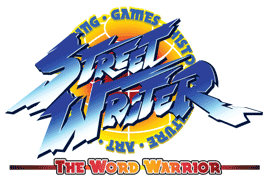
No comments:
Post a Comment